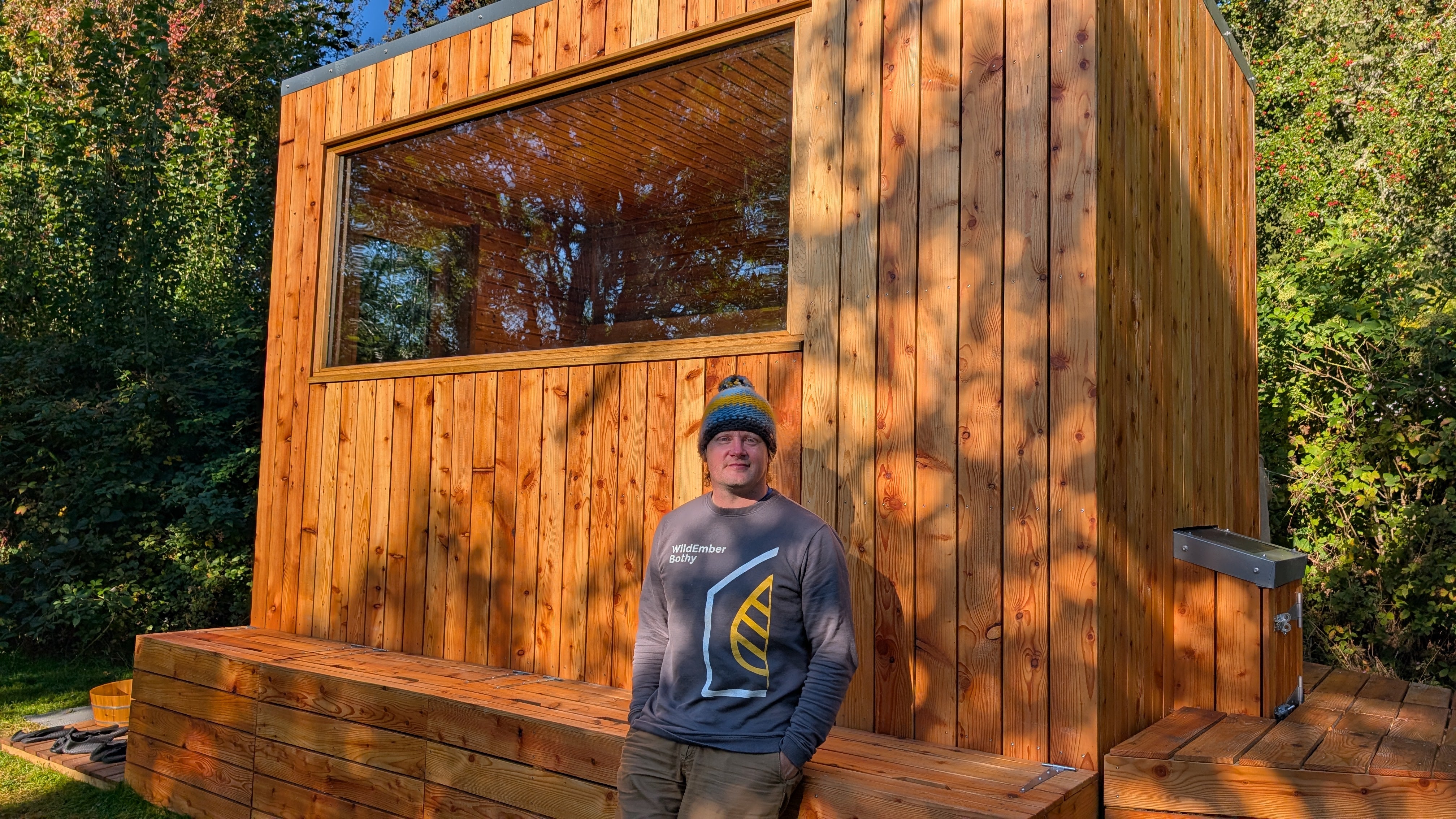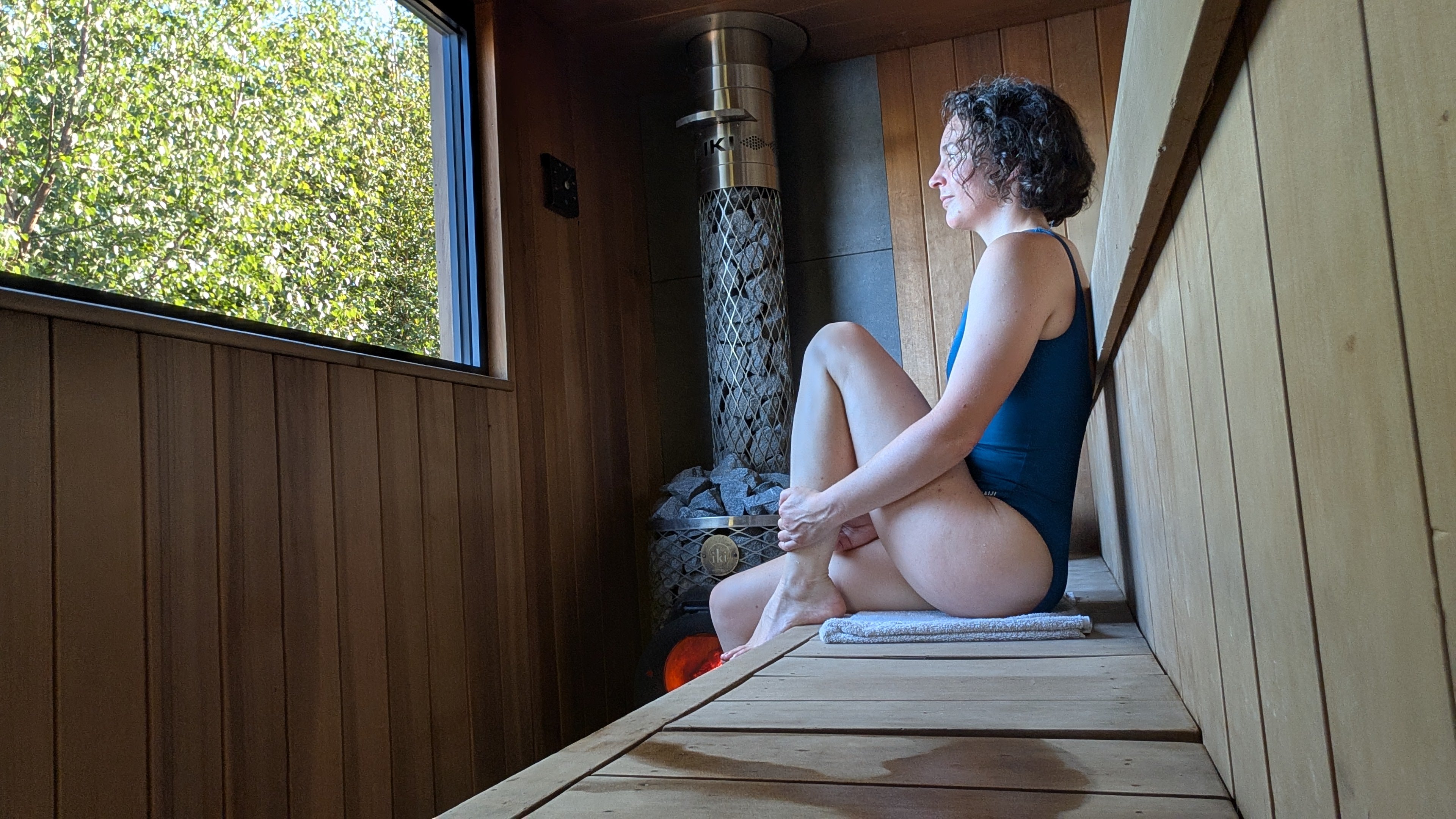From my clifftop perch, I have a clear view across the sparkling Firth of Forth to the quaint Scottish seaside town of Elie. Below me, waves roll up onto the rugged shore and I sync my breath with their rhythm. My heart rate slows and I feel my shoulders begin to drop. The breeze has that first bite of autumn and ordinarily, I’d be zipping up against the chill, but I’m enjoying all of this from a quiet cocoon, pre-heated to 80C and thinking a cold plunge might be quite nice.
Escape Sauna in North Berwick is one of many wild saunas cropping up in Scotland that are kicking off a quiet revolution in how people here experience the outdoors.
My love affair with saunas ignited during a school trip to Finland nearly 30 years ago but until now, it’s been carried on in gyms and spas. Though there’s archaeological evidence of prehistoric sweat-bathing in the Highlands and islands, saunas haven’t been fundamental to the fabric of modern Scottish life, despite the country’s proximity to sauna-loving Nordic and Baltic countries, not to mention notoriously unpleasant winters. Suddenly all that’s changed, with wild saunas dotting the landscape from the borders to Shetland.
Read more: Best spa hotels in Glasgow 2025, reviewed
“I initially thought it would be a lot of people that would want to come who were cyclists or walkers who would want to ease their muscles, but actually, no, that’s not the case,” says Jo McNicol, who owns Escape with her husband Stuart.
“It’s people that just genuinely know how good a sauna is for your whole mental, emotional and physical wellbeing.”
The McNicols are farmers and opened the sauna on their land in response to a government-supported initiative to bring visitors to rural businesses for memorable experiences, known as agritourism.
“We’re trying to encourage more people to come onto farms, for the benefit of their health,” says McNicol.
Less than an hour south of Edinburgh, it brings locals and tourists in droves to “sit on the bench”, as it’s called in sauna culture, and then cool off in the plunge bath with infinity views across the North Sea and occasional dolphin pod sightings.

Read more: The islands breaking the mould for a Nordic wellness experience
The unfolding story of wild saunas in Scotland coincides with the loss of a central meeting place in communities, formerly filled by churches and pubs, as well as a rising interest in wellness and better understanding of the role nature plays in health. In the book Wild Sauna, author Emma O’Kelly describes the trend as a form of “quiet activism” in a society where local authorities have to be persuaded on the merits of public health.
Unlike vigorous activities such as hiking, trail running or climbing, sauna culture doesn’t require elite-level fitness, technical skill or access to pricey equipment.
“If you can manage to get up a couple of steps to get into the sauna, you’re going to experience so many health benefits,” says Jayne McGhie, co-owner of Wild Scottish Sauna.
It’s not a sport or craft, it’s not the pub. It’s healthy and it’s egalitarian, it’s a level playing field.
Dave Girling, owner of WildEmber Bothy
The Fife-based entrepreneur co-founded Bob and Blether, an organisation which combines cold water swimming with social connection and organises events for women’s charities, and realised that saunas might help some people overcome their resistance to cold water. She launched her first sauna in 2023 and today, she and her partner run five saunas across Fife.
I meet her at one of them in serene Eden Springs Country Park where we start with an icy dip in a small swimming loch before retreating into the warmth. Tucked away from roads and towns, it feels secluded and yet it’s undeniably welcoming, something McGhie puts down to the lack of status symbols when you turn the temperature up: “Nobody’s wearing fancy clothes or Rolexes. Everybody’s stripped down to a bathing suit, everyone’s on the same level.”
Edinburgh resident Kim Robertson has accidentally found herself the unofficial registrar of Scotland’s wild saunas, charting their meteoric rise in a digital map which she created to keep track of her own sauna visits after trip to Finland.
“I couldn’t help thinking that Scotland has so many similarities with the Nordic countries that it was strange that there wasn’t something like that here.”
Read more: This new walking trail is the best way to explore the Lake District
From a handful of saunas in 2018, by 2023 she was tracking more than 30 wild saunas and decided to make the map public on the Instagram account Sauna Culture Scotland. Just two years later, there are almost 100 wild saunas on the map, accounting for nearly half of those in the UK. Robertson says the map helps her plan scenic detours when she’s travelling, rather than taking the fastest route, and one sauna owner tells me people from across the UK are using it to plan trips across Scotland.
What nearly all of these saunas have in common is that they showcase the natural landscape of Scotland – places where you might want to unplug and spend the day. They’re largely removed from the hustle of urban life and they break down at least some of the barriers to getting outdoors.

“It’s a way for us to get together but we don’t have to be good at something,” says Dave Girling, owner of WildEmber Bothy, a mobile sauna that’s currently nestled on the banks of Loch Tay near Aberfeldy in Highland Perthshire.
“It’s not a sport or craft, it’s not the pub. It’s healthy and it’s egalitarian, it’s a level playing field.”
A former outdoor education teacher turned ecotherapist, Girling opened WildEmber as a continuation of his work in using the outdoors to promote mental health. He used larch for the sauna’s exterior, so over time it will start to blend into the surrounding landscape. When I visit on a crisp autumn morning, the large picture window reveals red squirrels and chaffinches leaping from branch to branch outside, and Girling says this – not just the heat – is becoming part of the draw for visitors.
“People are coming weekly and they’re noticing that the rosebay willow herb is changing, they’re noticing that the insects that are around are changing. It piques an interest.”
Read more: Off the grid in Norway – and more connected than ever

